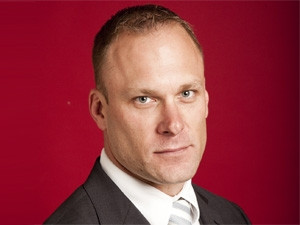
Although smart technology is expected to grow to the next big think, manufacturers still have some limitations to overcome.
This is according to the recent Intel Security International Internet of Things Smart Home survey, which polled 9 000 consumers in nine countries.
According to the report, consumers globally are aware of the benefits of smart homes. For example it reduces the administration associated with managing a home, giving home owners valuable insights into the running costs of water and electricity, as well as freeing up time.
Three out of four respondents expect smart homes to improve their quality of life, believing these innovations will help them spend more time with loved ones and by themselves, says Intel.
Trevor Coetzee, regional director, SA and Sub-Saharan Africa at Intel Security, says although SA was not part of this survey, it is generally known the local market tends to lag behind its global counterparts.
Revenue in the "smart home" market amounted to $32.8 million in 2016 in SA, with the US shown to generate most revenue of $9 712.5 million in 2016, says Statista.
Revenue in SA is expected to show an annual growth rate (compound annual growth rate 2016-2020) of 42.46% resulting in a market volume $135 million in 2020.
Gartner says the number of smart connected homes is expected to grow from between 100 million and 200 million homes now to between 500 million and 700 million homes by 2020.
The lack of a good business model or the immaturity of home Internet of things (IOT) products has not stopped gateway makers from trying to develop the market to grab a share in the home IOT opportunity, it adds.
Cable companies, Internet companies, alarm companies and mobile phone operating system providers are actively creating platforms and ecosystems in an attempt to break into the market, says Gartner.
However, Coetzee says SA needs to overcome several barriers before the connected home dream becomes a reality.
He notes if SA is to see widespread adoption of smart homes, manufacturers will have to overcome a number of factors, including price sensitivity, Interoperability and security issues.
South Africans are increasingly price-sensitive, says Coetzee, adding gross domestic product growth has slowed while inflation climbs and all segments of the market are feeling the pressure.
Therefore, concerns around share of wallet means less money for luxuries like connected HD TV, says Coetzee. Additionally, cost of data in SA is still comparatively high - and South Africans cannot try to run a smart home on a 3G connection, he adds.
Also, to date there is no common framework, no industry-wide policies or criteria to standardise connected devices on a security platform, notes Coetzee.
When things start interlinking in the home, homeowners need to make sure that the data shared upstream is secure, he adds.
Any connected device is a potential access point - into a network, information, and homes themselves, says Coetzee.
Anton Vukic, sales director of Phoenix Distribution, says lack of ubiquitous broadband in SA is one of the biggest barriers to the connected home.
The connected home goes beyond a collection of individual services to the home; it must be developed and connected as a totally integrated platform, adds Vukic.
However, Nick Caripis, founder and MD of BNC Technology, says as connectivity becomes a way of life, smart homes will soon become the norm among the high-end residential property owners in SA, especially since the number of dollar millionaires has climbed close to 10% since 2007.
South African home buyers and those who are planning to renovate should start factoring in potential home automation for the future, especially now that fibre-optic connectivity is being implemented, he adds.
Share